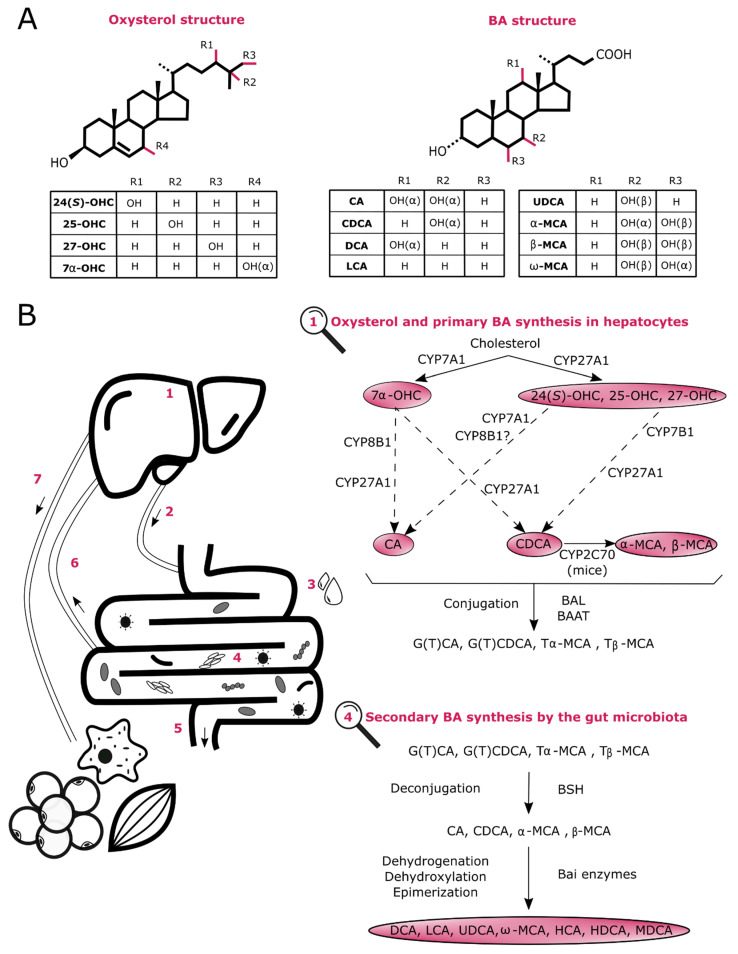Figure 1.
Overview of oxysterol and bile acid (BA) metabolism. (A) Structure of the main oxysterols and BAs involved in host homeostasis modulation. (B) Biosynthesis and circulation of oxysterols and BAs. (1) Primary BAs are generated from oxysterols through numerous enzymes (e.g., CYP7A1, CYP27A1, CYP7B1 and CYP8B1) in hepatocytes, are then conjugated with T or G by BAL and BAAT and finally stored in the gallbladder. (2) Upon meal ingestion, these are released into the duodenum. (3) BAs can facilitate lipid absorption. (4) Some primary BAs are deconjugated and then converted into secondary BAs by specific intestinal bacteria. (5) While approximately 5% are excreted, (6) about 95% are reabsorbed and travel back to the liver via the portal vein. (7) Finally, a small proportion of BAs reaches other organs (e.g., muscles and adipose tissue) through the systemic circulation. Abbreviations: BA, bile acid; BAAT, bile acid CoA:amino acid N-acyltransferase; Bai, bile acid-inducible; BAL, bile acid CoA ligase; BSH, bile salt hydrolase; CA, cholic acid; CDCA, chenodeoxycholic acid; CYP, cytochrome P450 enzyme; DCA, deoxycholic acid; G, glycine-conjugated species; HCA, hyocholic acid; HDCA, hyodeoxycholic acid; LCA, lithocholic acid; MCA, muricholic acid; MDCA, murideoxycholic acid; OHC, hydroxycholesterol; T, taurine-conjugated species; UDCA, ursodeoxycholic acid.

